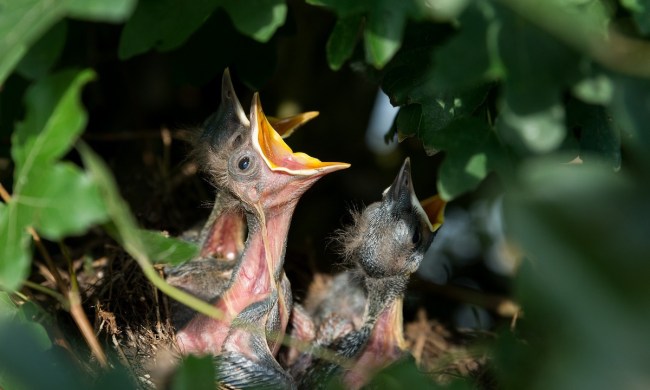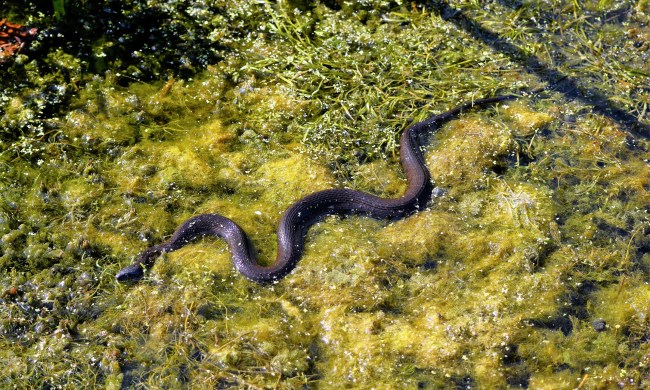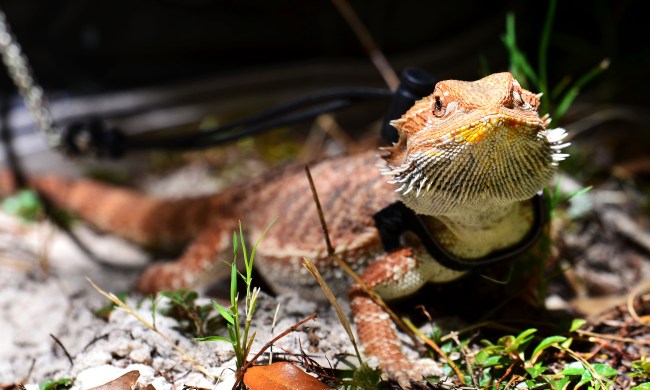Geckos occupy the sweet spot as a low-maintenance yet friendly and even cuddly pet. In recent years, leopard geckos, in particular, have taken over our homes as one of the best companions to own, even for less experienced animal lovers and children. Before you bring your new reptile home, you’ll need to stack the pantry with gecko food, which is mostly just bugs. However, there are a few more steps that go into the gecko feeding process, and you’ll need to be well versed before you embark on this pet ownership journey.
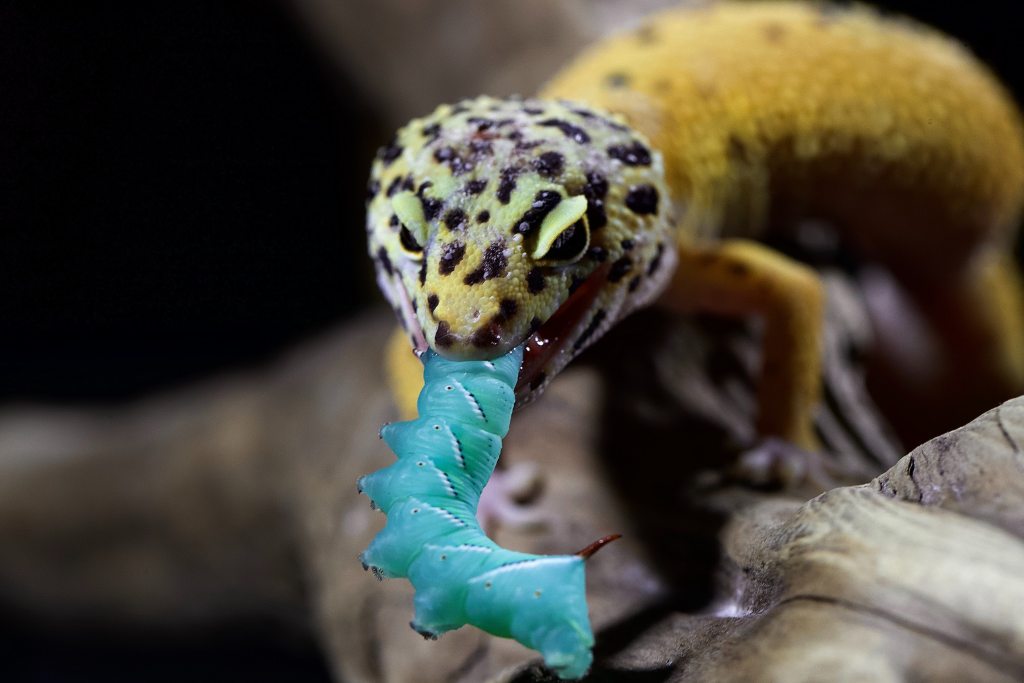
What do geckos eat?
No matter what species you get, your little lizard will love crunchy and delicious bugs. In fact, for most geckos, that’s all they eat. Even pelleted food probably won’t satiate, and your new friend most likely wants to hunt down his own crickets, too. That means you’ll need to be prepared to buy live insects for feeding, so make peace with that part before you dive in. Options include:
- Crickets
- Worms
- Roaches
- Flies
Variety is still the spice of life, even for a lizard. Mix things up when it comes to what type of critter you feed him to give him the proper vitamins and minerals (you’ll also want to gut-load, but more on that later). Every pet has a favorite, and you may notice he looks extra pleased when devouring a mealworm or fruit fly. Feel free to indulge his top foods, though — like dealing with a toddler — you’ll need to insist he finish his crickets, too.
It’s normal to want to share your snack with your pet. But here’s where it gets tricky: Most pet geckos cannot eat anything that you like to eat (unless you enjoy crunchy insects). In fact, even the fruit or lettuce other lizards snack on will seriously harm or kill your leo. They simply cannot digest it because they lack the chemicals to do so in their little tummies. A few species — day geckos, for example —do enjoy the occasional fruit snack, but even then, they mostly want to gobble up grubs.
Why do you need to gut-load?
Okay, so you’ve purchased some crickets, worms, roaches, and flies, for starters. Now what? As his parent, one of your tricky jobs includes getting your gecko the right nutrients, and, unfortunately, you will need to add a little something to his meal to do so. In the wild, bugs eat practically constantly and therefore contain all the needed vitamins in their bodies when they are subsequently eaten by a reptile. However, if you purchase live insects and don’t feed them, they will lack the basic necessities your animal desires.
Luckily, this is an easy fix. These insects are hungry, too, and just putting food in their container will entice them to a meal. You can give them fruit, fish food, or grains about 24 hours before placing them in the tank. Make sure they chow down on it, though they almost always do.
On top of this, geckos need calcium in large supply. Some of that will come from the gut loading or the bugs themselves, but we also recommend calcium powder. You can find this at any pet store and will need to dust it on their prey before they go hunting.
Don’t stop there. For best results, invest also in a multivitamin to add sparingly to his dinner. Without his supplements, he could get sick, especially with metabolic bone disease.
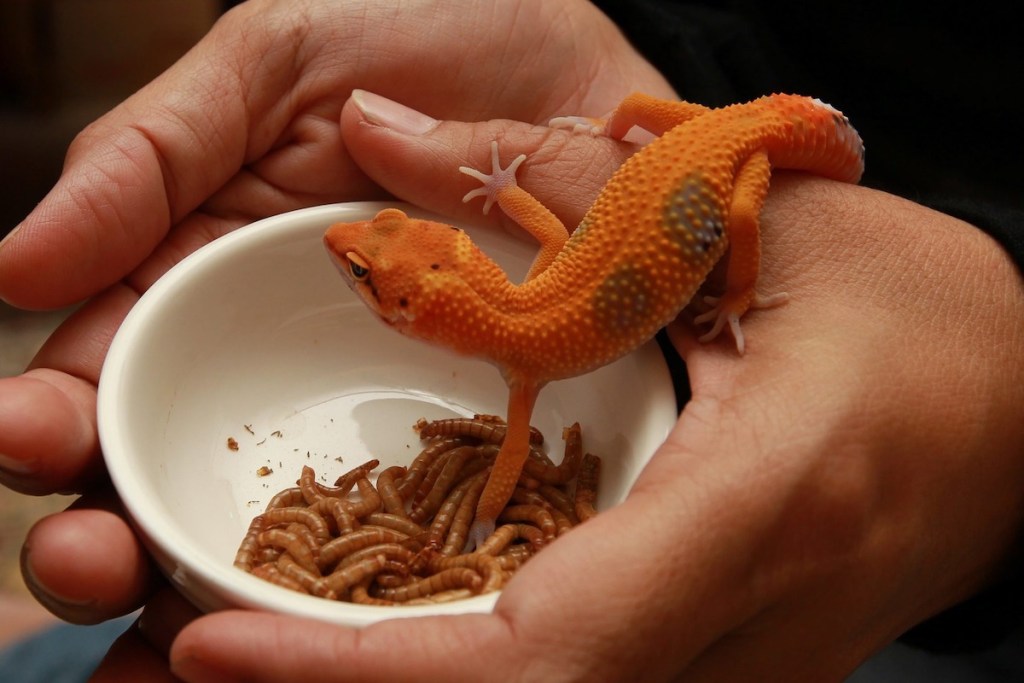
How do you feed them?
If you bring home a baby or juvie, you’ll start by feeding him every day. Since many geckos are nocturnal (the day gecko being an obvious exception), they prefer a nighttime meal. You’ll want to get into the habit of feeding him at about the same time every evening. Once your pet gets a little bigger, you’ll switch to about every other day. And finally, at a year, you’ll cut it down to three times per week.
As the frequency decreases, the amount of food increases since your little guy is getting bigger. Common wisdom says that you set the timer for 10 minutes and start the feeding process, stopping when the beep goes off. However, you can also judge based on how many bugs he needs, paying attention to your particular gecko but sticking with around seven insects each time.
To finish your feeding schedule, find a good way to keep track of which bugs he’s had in any given week. Crickets and mealworms should stay as the primary source of food since they contain the best nutrition. However, fatty waxworms or superworms will get your gecko jumping with joy. Stick with doling out those treats only once per week. For smaller geckos, flies are the way to go since the larger creepy-crawlies give the smaller breeds trouble.
It might seem like a lot at first, but you’ll get into a routine right away. Consider putting up a whiteboard or using an app to track his meals and treats, especially if more than one person handles his feedings. Most importantly, always keep him well-stocked in water since geckos can dehydrate easily and need something to wash down all the bugs.

